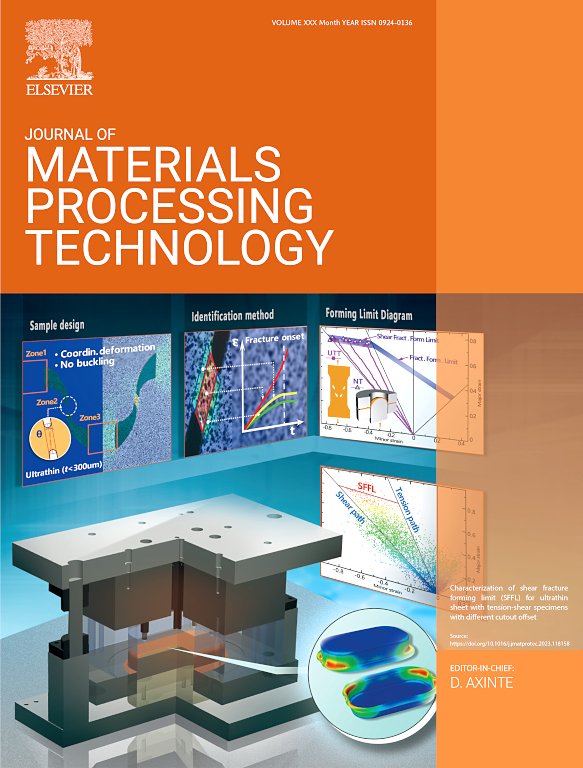Synthesis of small-sized spherical Fe-based amorphous powders with insulating nanolayer from ribbon electrodes
IF 6.7
2区 材料科学
Q1 ENGINEERING, INDUSTRIAL
Journal of Materials Processing Technology
Pub Date : 2024-09-26
DOI:10.1016/j.jmatprotec.2024.118610
引用次数: 0
Abstract
With growing demand for high-frequency electronic components in modern 5 G and ongoing 6 G communication networks, advanced soft-magnetic composites (SMCs) are crucial in diverse applications of electronic products and power systems. A novel spark erosion approach using ribbon electrodes was developed to produce fine Fe-based amorphous powders with high sphericity (99.5 %) and controllable particle sizes (D50 ≤ 5.9 μm). The use of ribbon electrode leads to a significant enhancement of powder production efficiency, approximately four times than that achieved using bulk electrodes employed in conventional spark erosion. An oxygen-rich nanolayer was formed in-situ on the powder surface with high resistivity, eliminating the subsequent complex insulating treatment in traditional SMCs production. The SMCs made of our small-sized spherical insulated powders demonstrated stable permeability at high frequency, relatively high saturation magnetization, and low core losses. These performances meet the urgent soft-magnetic requirements essential for the miniaturization and high-frequency applications of electronic devices. The novel spark erosion method for preparation of fine spherical amorphous and crystalline powders with excellent soft-magnetic properties holds paramount importance for the manufacturing of high-performance SMCs as advanced electronic components.
用带状电极合成带有绝缘纳米层的小尺寸球形铁基非晶粉末
随着现代 5 G 和未来 6 G 通信网络对高频电子元件的需求日益增长,先进的软磁复合材料(SMC)在电子产品和电力系统的各种应用中至关重要。我们开发了一种使用带状电极的新型火花侵蚀方法,用于生产具有高球形度(99.5%)和可控粒度(D50 ≤ 5.9 μm)的精细铁基无定形粉末。使用带状电极可显著提高粉末生产效率,约为传统火花侵蚀中使用的块状电极的四倍。粉末表面原位形成的富氧纳米层电阻率高,省去了传统 SMC 生产中复杂的后续绝缘处理。由我们的小尺寸球形绝缘粉末制成的 SMC 在高频下具有稳定的磁导率、相对较高的饱和磁化率和较低的磁芯损耗。这些性能满足了电子设备小型化和高频应用对软磁的迫切要求。利用新型火花侵蚀法制备具有优异软磁特性的精细球形非晶和结晶粉末,对于制造高性能 SMC 先进电子元件具有极其重要的意义。
本文章由计算机程序翻译,如有差异,请以英文原文为准。
求助全文
约1分钟内获得全文
求助全文
来源期刊

Journal of Materials Processing Technology
工程技术-材料科学:综合
CiteScore
12.60
自引率
4.80%
发文量
403
审稿时长
29 days
期刊介绍:
The Journal of Materials Processing Technology covers the processing techniques used in manufacturing components from metals and other materials. The journal aims to publish full research papers of original, significant and rigorous work and so to contribute to increased production efficiency and improved component performance.
Areas of interest to the journal include:
• Casting, forming and machining
• Additive processing and joining technologies
• The evolution of material properties under the specific conditions met in manufacturing processes
• Surface engineering when it relates specifically to a manufacturing process
• Design and behavior of equipment and tools.
 求助内容:
求助内容: 应助结果提醒方式:
应助结果提醒方式:


